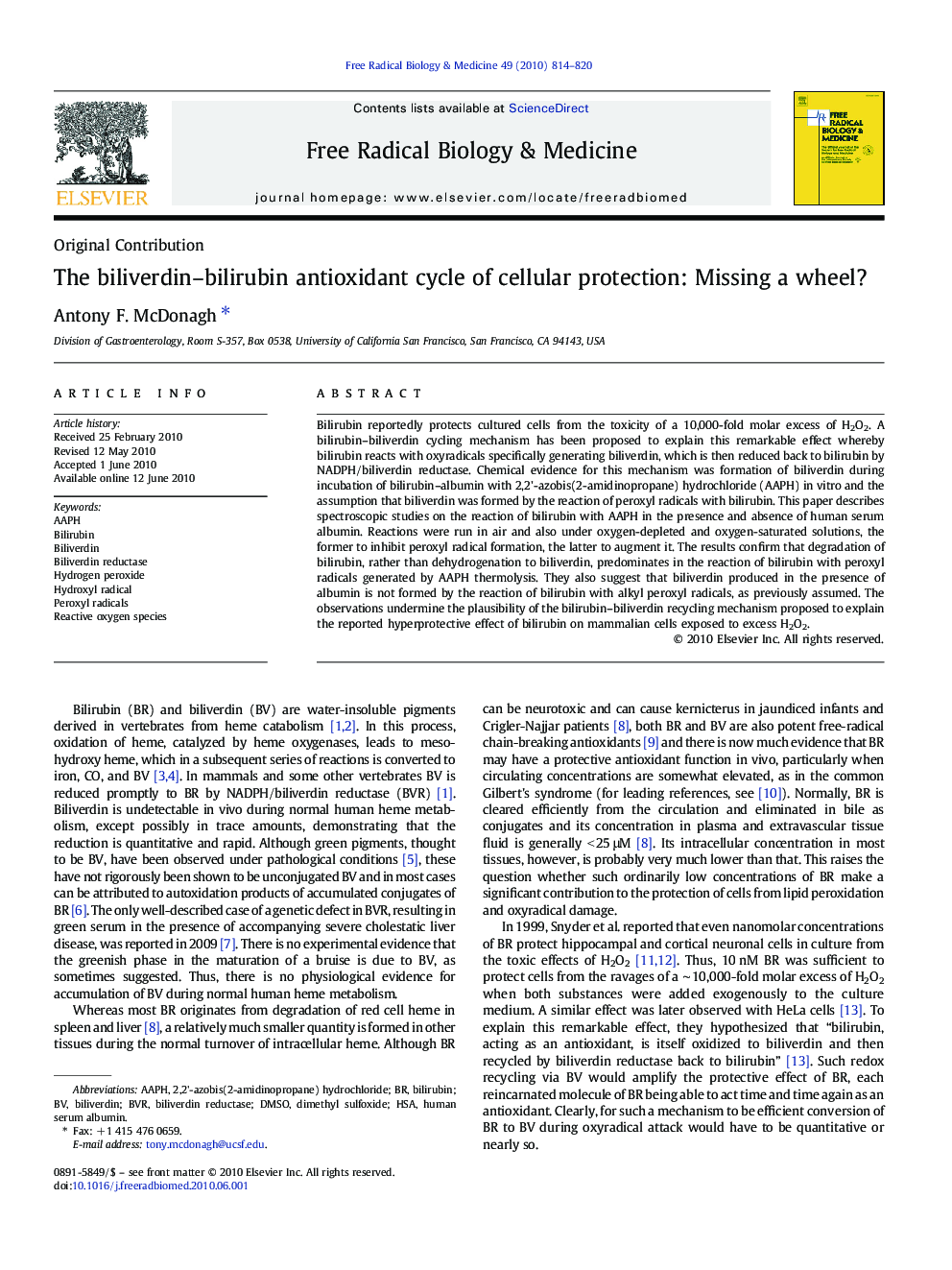| کد مقاله | کد نشریه | سال انتشار | مقاله انگلیسی | نسخه تمام متن |
|---|---|---|---|---|
| 1909205 | 1046711 | 2010 | 7 صفحه PDF | دانلود رایگان |

Bilirubin reportedly protects cultured cells from the toxicity of a 10,000-fold molar excess of H2O2. A bilirubin–biliverdin cycling mechanism has been proposed to explain this remarkable effect whereby bilirubin reacts with oxyradicals specifically generating biliverdin, which is then reduced back to bilirubin by NADPH/biliverdin reductase. Chemical evidence for this mechanism was formation of biliverdin during incubation of bilirubin–albumin with 2,2'-azobis(2-amidinopropane) hydrochloride (AAPH) in vitro and the assumption that biliverdin was formed by the reaction of peroxyl radicals with bilirubin. This paper describes spectroscopic studies on the reaction of bilirubin with AAPH in the presence and absence of human serum albumin. Reactions were run in air and also under oxygen-depleted and oxygen-saturated solutions, the former to inhibit peroxyl radical formation, the latter to augment it. The results confirm that degradation of bilirubin, rather than dehydrogenation to biliverdin, predominates in the reaction of bilirubin with peroxyl radicals generated by AAPH thermolysis. They also suggest that biliverdin produced in the presence of albumin is not formed by the reaction of bilirubin with alkyl peroxyl radicals, as previously assumed. The observations undermine the plausibility of the bilirubin–biliverdin recycling mechanism proposed to explain the reported hyperprotective effect of bilirubin on mammalian cells exposed to excess H2O2.
Journal: Free Radical Biology and Medicine - Volume 49, Issue 5, 1 September 2010, Pages 814–820